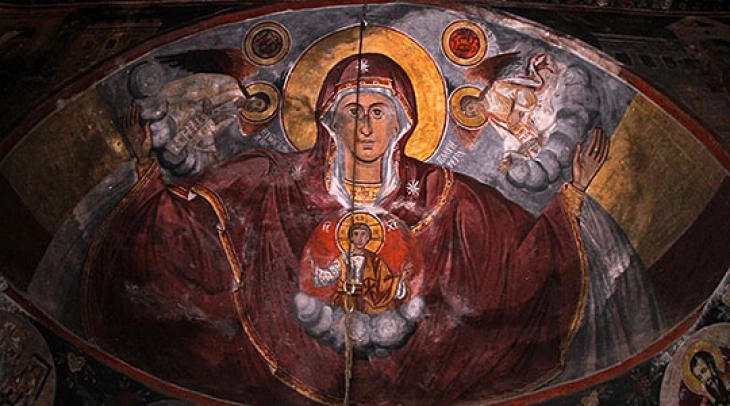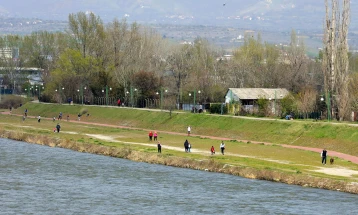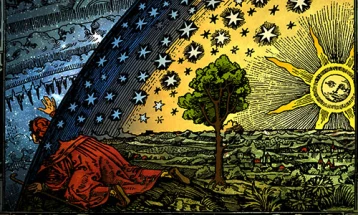Religious calendars
- He was born in Bithynia, in the town of Caesarea. His father, Philaret, losing his wife, became a monk.
- Post By Ivan Kolekevski
- 08:14, 16 April, 2024

16 April 2024 (MIA)
Macedonian Orthodox Church Calendar
St. Nicetas, the Confessor
He was born in Bithynia, in the town of Caesarea. His father, Philaret, losing his wife, became a monk. Nicetas remained with his paternal grandmother. After he had grown up and finished his schooling, he went to a monastery in Midikion, where Nicephorus, the abbot, tonsured him as a monk. After seven years of toil and asceticism, Patriarch Tarasius ordained him hieromonk. After the deaths of Nicephorus and Nicetas’s great friend, Athanasius, the brethren chose Nicetas as abbot, much against his will. St Nicetas was a holy example of life and asceticism to his brethren for many years. But when Leo V, the Armenian, came to the throne, following the devout Empress Irene and the pious Emperors Nicephorus and Michael, the iconoclast heresy sprang up again. The Emperor deposed Patriarch Nicephorus and sent him into exile, and in his place put a heretic, Theodotus Cassiteras, a man of impure life. Nicetas was imprisoned and tortured, but remained unwavering in his Orthodoxy. He was taken from prison to prison and tortured by hunger and thirst, by cold and heat and malice. But he remained utterly unwavering. A certain Nicolas pestered him particularly with his derision and malice. But one night the dead father of this Nicolas appeared to him in a dream and said: `Leave that servant of God alone!’ From that moment Nicolas repented, and not only refrained from pestering him but prevented others doing likewise. When the Emperor Leo the Armenian had made an evil end, the throne passed to the Orthodox Emperor Michael Balbus, who freed all the Orthodox sufferers. Nicetas retired to a lonely place near Constantinople, where he spent the remaining days of his earthly life in prayer and thanksgiving to God. When he died, his body was taken to his monastery and, during that journey, many of the sick, on touching his body, were healed. His relics were placed close to the graves of his spiritual father, Nicephorus, and his friend Athanasius. This great hierarch entered into rest in 824.
Catholic Calendar
St. Bernadette Soubirous
Famed visionary of Lourdes, baptised Mary Bernard. She was born in Lourdes, France, on January 7, 1844, the daughter of Francis and Louise Soubirous. Bernadette, a severe asthma sufferer, lived in abject poverty. On February 11, 1858, she was granted a vision of the Blessed Virgin Mary in a cave on the banks of the Gave River near Lourdes. She was placed in consider able jeopardy when she reported the vision, and crowds gathered when she had further visits from the Virgin, from February 18 of that year through March 4. The civil authorities tried to frighten Bernadette into recanting her accounts, but she remained faithful to the vision. On February 25, a spring emerged from the cave and the waters were discovered to be of a miraculous nature, capable of healing the sick and lame. On March 25, Bernadette announced that the vision stated that she was the Immaculate Conception, and that a church should be erected on the site. Many authorities tried to shut down the spring and delay the construction of the chapel, but the influence and fame of the visions reached Empress Eugenie of France, wife of Napoleon Ill, and construction went forward. Crowds gathered, free of harassment from the anticlerical and anti-religious officials. In 1866, Bernadette was sent to the Sisters of Notre Dame in Nevers. There she became a member of the community, and faced some rather harsh treatment from the mistress of novices. This oppression ended when it was discovered that she suffered from a painful, incurable illness. She died in Nevers on April 16,1879, still giving the same account of her visions. Lourdes became one of the major pilgrimage destinations in the world, and the spring has produced 27,000 gallons of water each week since emerging during Bernadette’s visions. She was not involved in the building of the shrine, as she remained hidden at Nevers. Bernadette was beatified in 1925 and canonised in 1933 by Pope Pius XI.







